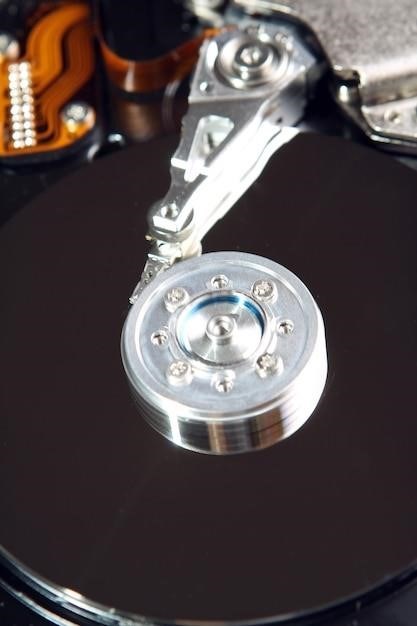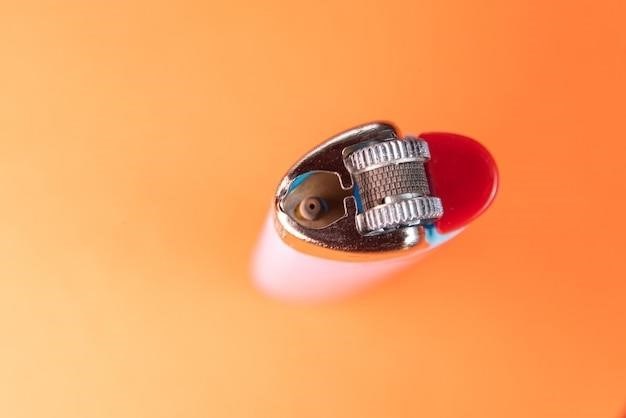The Subaru SVX, with its sleek coupe design and powerful engine, has always been a tempting prospect for enthusiasts. However, its automatic transmission has often been criticized for its lack of driver engagement. This has led many SVX owners to consider a manual transmission swap, a project that can significantly enhance the driving experience.
Introduction
The Subaru SVX, a unique and stylish coupe that debuted in 1992, captivated enthusiasts with its sleek design and powerful 3.3-liter flat-six engine. However, the standard automatic transmission often drew criticism for its lack of driver engagement, hindering the car’s potential for sporty driving. This led many SVX owners to explore the possibility of a manual transmission swap, seeking to unlock the car’s true performance capabilities and enhance the overall driving experience.
A manual transmission swap in an SVX involves replacing the factory automatic gearbox with a manual unit from another Subaru model. This process requires careful planning, selecting the right transmission, and addressing potential compatibility issues. The end result, however, is a transformation that allows drivers to fully engage with the SVX’s power and handling characteristics, delivering a more rewarding and exhilarating driving experience.
While the manual transmission swap is not a simple undertaking, it is a highly rewarding project for those seeking to enhance their SVX’s performance and driving pleasure. This article delves into the intricacies of this conversion, providing guidance and insights for anyone considering embarking on this exciting endeavor.
Why Swap to a Manual Transmission?
The allure of a manual transmission lies in its ability to provide a more engaging and rewarding driving experience. For Subaru SVX owners, this desire for a more direct connection to the car’s performance is especially strong, given the inherent limitations of the factory automatic transmission. A manual swap opens up a world of possibilities, transforming the SVX from a comfortable cruiser into a more spirited and enjoyable driver’s car.
One of the primary reasons for swapping to a manual transmission is the enhanced driver control and engagement it offers. Shifting gears manually allows drivers to precisely manage engine speed and torque, maximizing acceleration and optimizing fuel efficiency. This level of control is simply not achievable with an automatic transmission, which can often feel sluggish and unresponsive.
Furthermore, a manual transmission contributes to a more immersive and engaging driving experience. The act of shifting gears, feeling the clutch pedal, and selecting the right gear creates a more intimate connection with the car, fostering a sense of involvement that is often lacking in automatic transmissions. The tactile feedback and the ability to precisely control the car’s behavior contribute to a more satisfying and rewarding driving experience.
Choosing the Right Transmission
Selecting the right transmission for your SVX manual swap is a crucial step, as it will determine the overall driving experience and performance characteristics of your car. The most common choice is a five-speed manual transmission from other Subaru models, particularly those with the EJ series engine, such as the Impreza WRX or Legacy. These transmissions are known for their durability and compatibility with the SVX’s drivetrain.
When choosing a transmission, consider the final drive ratio. The SVX’s original automatic transmission had a 3.545⁚1 final drive ratio, which is uncommon in other Subarus. Early WRX transmissions, with their 1.1⁚1 final drive output, provide a straight swap, resulting in a matched 3.9⁚1 front and rear ratio. This ensures optimal performance and drivability, but it’s important to be aware of the potential differences in clutch throw-out mechanisms between various Subaru transmissions.
For those seeking higher performance, the six-speed manual transmission from the Subaru Impreza WRX STI is another option. However, it requires more modifications and may not be as readily available. Ultimately, the best transmission choice depends on your specific needs and budget. Researching the various options and consulting with experienced SVX owners can help you make an informed decision.
Required Parts and Modifications
A successful SVX manual transmission swap requires a comprehensive list of parts and modifications. The foundation is, of course, the chosen manual transmission, along with its associated clutch assembly, flywheel, and shifter mechanism. You’ll also need a compatible driveshaft, likely from a donor car, to connect the transmission to the rear differential. Additional components include a hydraulic clutch master cylinder and slave cylinder, pedal assembly, and wiring harness for the clutch and shifter.
The swap necessitates various modifications. A transmission mount is required to securely position the new transmission in the engine bay. The existing automatic transmission control system must be removed, and the vehicle’s computer reprogrammed to accommodate the manual transmission. Modifications to the interior are needed to accommodate the new shifter, and the existing parking brake may need adjustment or replacement.
The project also involves fabricating custom brackets and mounting points for the new transmission, clutch, and shifter assembly. This is a challenging aspect of the swap, requiring knowledge of fabrication and welding skills. It’s highly recommended to consult with experienced SVX mechanics and enthusiasts for guidance and assistance during this process.
Installation Process
The installation process for an SVX manual transmission swap is a complex undertaking, requiring a significant amount of time, skill, and patience; It involves carefully removing the existing automatic transmission, along with its associated components, such as the torque converter, bellhousing, and driveshaft. The new manual transmission is then installed, requiring precise alignment and securing with the appropriate mounting hardware.
The clutch assembly, including the flywheel, pressure plate, and clutch disc, is then installed. The shifter mechanism is connected to the transmission, followed by the installation of the driveshaft. The hydraulic clutch system, consisting of the master cylinder, slave cylinder, and lines, is carefully routed and connected to the pedal assembly.
Once the physical components are in place, the wiring harness for the clutch and shifter needs to be connected. The vehicle’s computer system must be reprogrammed to recognize the manual transmission and control the new clutch and shifter. Finally, the entire system is carefully tested to ensure smooth operation, proper gear engagement, and clutch function.
Rear Differential Considerations
The SVX’s rear differential is a crucial component that needs to be carefully considered during a manual transmission swap. The original SVX differential has a final drive ratio of 3.545⁚1, which is uncommon in other Subaru models. This ratio can create compatibility issues when pairing it with a manual transmission from a different Subaru, especially those with different final drive ratios.
For example, early WRX transmissions have a final drive ratio of 1.1⁚1, which, when combined with the SVX’s rear differential, results in a final gear ratio of 3.9⁚1. This matched ratio ensures smooth power delivery and optimal performance. However, other manual transmissions may have different final drive ratios, requiring a change to the rear differential to maintain optimal gearing.

When selecting a manual transmission and rear differential for your SVX swap, it’s essential to research the final drive ratios of both components and ensure they are compatible to avoid any potential issues with performance and drivability. Consult with experienced mechanics or Subaru enthusiasts for advice on choosing the right combination for your specific setup.
Clutch and Shifter Setup
Once the transmission is installed, the next crucial step is setting up the clutch and shifter. This involves selecting the appropriate clutch components and configuring the shifter linkage for smooth, precise gear changes. The choice of clutch components depends on the specific transmission used in the swap, as different transmissions have varying requirements for clutch diameter, hydraulics, and throw-out bearing.
A common recommendation is to use a WRX clutch kit, known for its durability and performance. However, other options, such as aftermarket performance clutches, may also be suitable depending on your driving style and desired performance level. The shifter setup requires careful attention to ensure the shifter lever has the correct throw and feel. This often involves adjusting the shifter linkage and potentially modifying the shifter boot to accommodate the new shifter position.
For optimal performance and driving experience, it’s important to select high-quality clutch components and carefully configure the shifter linkage to ensure smooth gear engagement and a comfortable driving experience. Consulting with experienced mechanics or Subaru enthusiasts can provide valuable insights and guidance on selecting the right components and setting up the clutch and shifter for your SVX manual transmission swap.
Calibration and Testing
After the manual transmission swap is complete, it’s essential to calibrate and test the system thoroughly to ensure proper functionality and performance. This involves adjusting the clutch pedal height and free play, as well as fine-tuning the shifter linkage for smooth and precise gear changes. Proper calibration is crucial for achieving optimal clutch engagement, preventing premature wear, and ensuring a comfortable driving experience.
A test drive is crucial to assess the overall performance of the manual transmission swap. It allows you to evaluate the clutch engagement, shifter feel, gear ratios, and overall drivability. During the test drive, pay attention to any unusual noises, vibrations, or shifting difficulties. If any issues arise, it’s essential to address them promptly to ensure the long-term reliability and performance of the manual transmission system.
After the initial test drive, it’s recommended to perform further adjustments and fine-tuning as needed. This may involve adjusting the clutch hydraulics, shifter linkage, or even tweaking the gear ratios if necessary. By diligently calibrating and testing the manual transmission swap, you can maximize its performance and ensure a rewarding driving experience with your Subaru SVX.
Potential Challenges and Solutions
While a manual transmission swap in a Subaru SVX can be a rewarding project, it’s not without its potential challenges. One common issue is finding a suitable transmission that fits the SVX’s unique drivetrain. The SVX’s rear differential and final drive ratio are different from most other Subaru models, requiring careful selection of a compatible transmission. Additionally, the SVX’s engine bay is relatively cramped, making access to certain components difficult. This can pose challenges during installation and require specialized tools and techniques.
Another challenge lies in adapting the clutch system to the SVX’s unique hydraulic system. The SVX utilizes a push-type clutch, while some donor transmissions use a pull-type system. This requires careful consideration and potential modifications to ensure proper clutch engagement and operation. Finally, the SVX’s electrical system may require adjustments to accommodate the new manual transmission. For example, the electronic transmission control module (TCM) needs to be bypassed or reprogrammed, and the vehicle speed sensor may need to be relocated;
Fortunately, with careful planning and execution, these challenges can be overcome. Consult with experienced Subaru mechanics or online forums for guidance and support. Utilize high-quality parts and tools, and take your time to ensure proper installation and adjustments. By addressing these potential challenges head-on, you can achieve a successful and enjoyable manual transmission swap in your Subaru SVX.

Swapping a manual transmission into a Subaru SVX is a project that can transform the driving experience. By replacing the original automatic transmission with a five-speed manual, you unlock a greater sense of control and engagement, enhancing the SVX’s sporty character. The process, however, demands careful planning and execution. It involves selecting the right transmission, addressing compatibility issues, and performing a meticulous installation. The potential challenges, including finding a suitable transmission, adapting the clutch system, and making electrical adjustments, can be overcome with thorough research, expert guidance, and a commitment to quality parts and workmanship.
Ultimately, the rewards of a successful manual transmission swap are significant. The SVX gains a newfound agility and responsiveness, making it a more engaging and rewarding car to drive. The transformation goes beyond mere mechanical change; it elevates the SVX from a comfortable grand tourer to a true driver’s car, showcasing its hidden performance potential. For those seeking a unique and satisfying automotive project, a manual transmission swap in a Subaru SVX offers a fulfilling journey, culminating in a truly exceptional driving experience.
